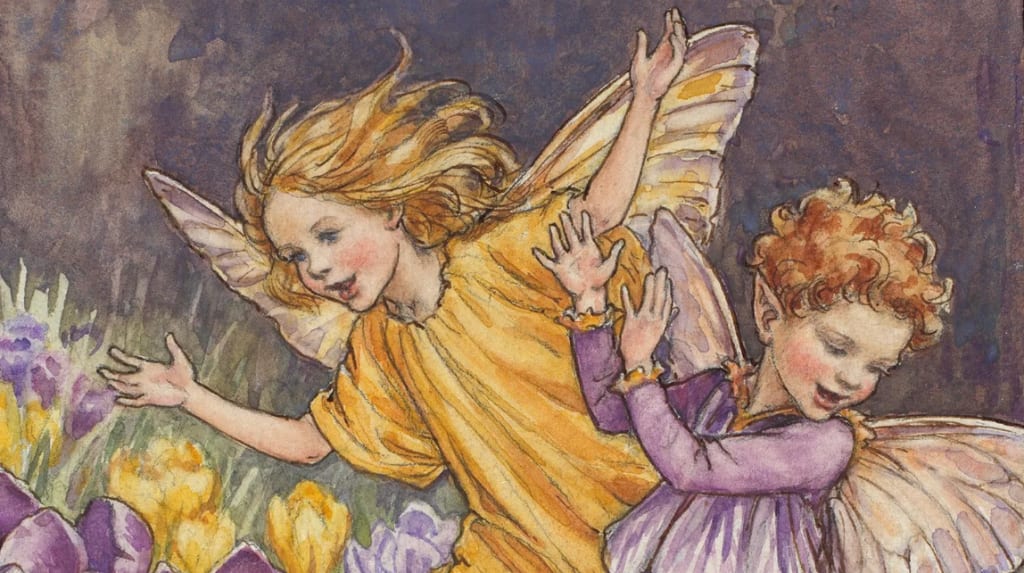When Britain was gripped by 'fairy mania'
'fairy mania'

During a bygone era, a whimsical and captivating phenomenon known as "fairy mania" held Britain in its enchanting thrall. This extraordinary infatuation with fairies, whether genuine or figments of the imagination, can be traced back to the 19th and early 20th centuries. In the forthcoming exploration, we shall embark upon a journey into the spellbinding realm of fairy mania, delving into its origins, the profound influence of folklore and literature, and its indomitable enduring legacy.
The Genesis of Fairy Mania
Fairy mania found its origins interwoven in the intricate tapestry of British folklore and history. The belief in fairies could be attributed to a diverse amalgamation of cultural influences, including Celtic and pagan traditions that exalted the mystical and the supernatural. These early beliefs laid the groundwork for the captivating fascination with these magical entities.
Ancient Chronicles of Fairy Encounters
British history brims with ancient accounts and narratives of encounters with fairies. These chronicles, handed down through generations, recounted meetings with mischievous, otherworldly beings. The tales spanned a spectrum of enchantment and enigma, encompassing changelings to pixies, perpetuating the aura of wonder and mystique.
Fairy Tales and Folklore's Role
Fairy tales and folklore occupied a pivotal role in perpetuating fairy mania. Literary works such as "A Midsummer Night's Dream" and "Peter Pan" seized the collective imagination of readers, igniting and nurturing the belief in fairies. These narratives breathed life into these fantastical beings, and people wholeheartedly embraced them.
The Cottingley Fairies Enigma
One of the most beguiling episodes in the annals of fairy mania unfolded with the Cottingley Fairies. In the early 20th century, two young girls, Elsie Wright and Frances Griffiths, professed to have captured fairies on camera in their garden. These photographs ignited a frenzy of interest and fervent debate, with some staunchly advocating for the existence of fairies.
The Victorian Era and the Obsession with Spiritualism
The Victorian era, steeped in its obsession with the supernatural, furnished fertile ground for the flourishing of fairy mania. The surge of spiritualism, séances, and an ardent preoccupation with the afterlife fostered an environment where belief in fairies not only found acceptance but was actively encouraged.
The Literary Connoisseurs' Contribution
Literary luminaries like William Shakespeare, J.M. Barrie, and the Brothers Grimm, among others, left an indelible mark on the romanticization of fairies. Their literary works introduced fairies as beloved characters, firmly embedding them within the tapestry of British literature.
Modern Interpretations and the Perpetuation of Magic
Although fairy mania may have waned in the 20th century, it did not vanish entirely. In our contemporary era, modern interpretations of fairies have emerged through various mediums, including movies, books, and art, ensuring that the magic of fairies endures.
Psychological Insights into the Fascination
Psychologists have dedicated their studies to comprehending the phenomenon of fairy mania, exploring the underlying reasons for people's magnetic attraction to these enchanting creatures. The allure of escapism, wonder, and the innate human desire to believe in the extraordinary all play pivotal roles.
Unmasking the Myths and Hoaxes
While fervent believers abounded, skeptics and debunkers eventually arose. Hoaxes and attempts to substantiate the existence of fairies were exposed, contributing to an escalation in skepticism.
The Everlasting Legacy of Fairy Mania
The legacy of fairy mania continues to thrive within British culture. Even in an age characterized by science and reason, the enchantment with fairies remains an integral facet of the national identity.
Collectibles and Memorabilia - A Continual Allure
Collectibles and memorabilia associated with fairies, ranging from figurines to clothing, continue to captivate and resonate with enthusiasts and collectors alike.
Pop Culture Reverberations
The influence of fairy mania upon pop culture is undeniable. From the beloved Tinker Bell to contemporary fantasy series, fairies persist in enchanting and inspiring audiences.
Contemporary Resurgence of Interest
Today, a revitalized interest in fairies has emerged, with a plethora of events, festivals, and gatherings devoted to celebrating these mystical beings.
In Conclusion
In summation, fairy mania stands as an enchanting chapter in the annals of British cultural history. This profound preoccupation with fairies, deeply rooted in folklore, literature, and history, continues to cast its spell upon those who yearn for a touch of magic in the quotidian. While belief in fairies may have evolved, it stands as a testament to the enduring potency of the human imagination.
About the Creator
Nizam malang
Nizam Malang: Passionate historian unraveling untold stories of the past, connecting historical events with fresh perspectives, and making history accessible for all.
Enjoyed the story? Support the Creator.
Subscribe for free to receive all their stories in your feed. You could also pledge your support or give them a one-off tip, letting them know you appreciate their work.






Comments
There are no comments for this story
Be the first to respond and start the conversation.